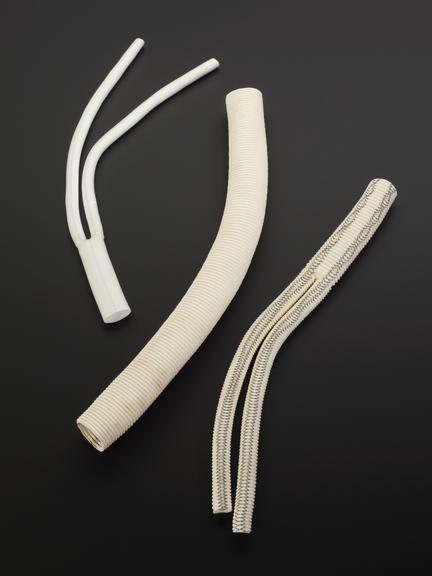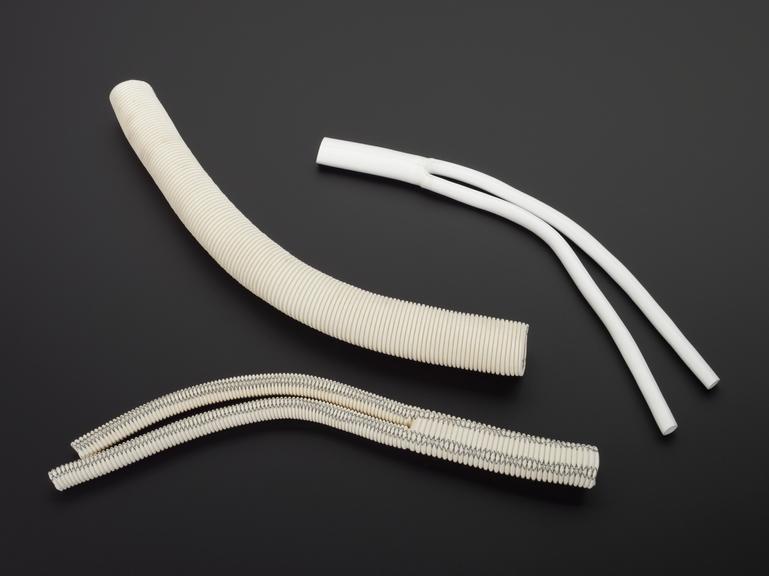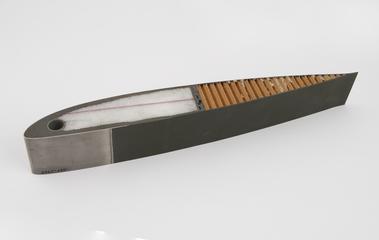
Artificial Teflon arteries, United States, 1994
- Made:
- 1994 in United States








Three 'Teflon' artificial scaffold arteries, two bifurcated and one single, by DuPont, United States, 1994 (see note).
Cardiovascular disease – in which an individual’s arteries can harden and become blocked – is a major cause of death, particularly in the developed world. These prosthetic arteries, made out of Teflon, are inserted into the body to replace the function of the natural arteries. Although it can prolong life, the material has its limitations and a new generation of improved synthetic arteries is currently being developed.
Teflon, a non-stick material, was first developed in 1938 at Dupont’s Jackson Research Laboratory in New Jersey, USA. Dupont have made Teflon for a variety of uses including, saucepans, clothing, buildings and – as in this case – surgical implants.
Details
- Category:
- Materials Science Gallery
- Object Number:
- 2015-508
- Materials:
- teflon and plastic (unidentified)
- Measurements:
-
overall: 30 mm x 340 mm x 200 mm, .045kg
artery 3: 340 mm x 30 mm, .03kg
artery 2: 330 mm x 34 mm,
artery 1: 290 mm x 24 mm,
- type:
- artificial arteries
- credit:
- DuPont




